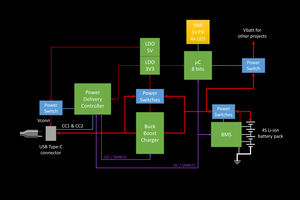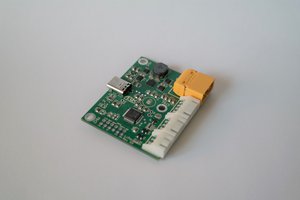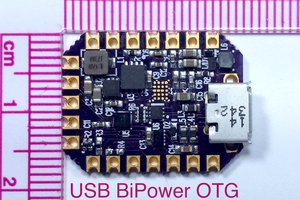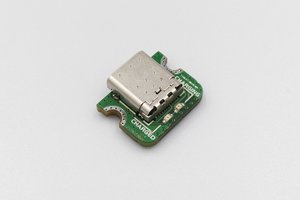This board is part of Fyber Labs Flex Module project. Flex Modules are small modular circuits for wearable applications.
The Qi and USB Li Charger Flex Modules is a charger for a wide range of single cell (4.2V) rechargeable batteries. Charging sources are obviously Qi wireless and USB. Charging by USB requires the VBUS input (provided by our USB BiPower Flex Modules). In addition to charging, the Flex Module manages and monitors battery output and depending on configuration, it can also provide Qi based power through VBUS.
The BQ24296 provides a 5V boost to VBUS from battery to negotiate USB On-The-Go (OTG) Host Negotiation Protocol (HNP) and Session request Protocol (SRP) protocols to charge or charge from external OTG devices. The protocol is negotiated by a USB OTG device such as the STM32F401 microcontroller or the optional MAX3353 on the USB BiPower OTG Flex Module.
The BQ24296 additional provides VSYS power which outputs 4.2V-3.5V from the battery. It boosts the battery voltage when it falls below 3.5V to provide a more consistent voltage and full discharge. VSYS is utilized by the USB BiPower OTG Flex Module to power its 3.3V output when USB VBUS is not available. PMID is also available which provides either the 5V input or the battery if no charger input power available.
The BQ51013B negotiates with a Qi transmitter to supply 5V to the BQ24296 charger at up to 1.5A through the VBUS input. A dual P-FET configuration controls VBUS input/output or Qi input. Priority between charging sources or even providing USB OTG is selectable through i2c control.
Included is a STC3115 fuel gauge that monitors both voltage and current. Discrete logic defaults allow the charger to operate autonomously, though it can be fully controlled through i2c. The BQ51013B enable pins and the BQ24296 OTG pin are managed by an i2c GPIO device the PCA9570GM.
LED indicators report Qi or VBUS input, charging, or error.
NOTE: Any Qi wireless charging coil should be separated with a ferrite shield material from a given PCB design (flexible or otherwise) and the battery. Otherwise damage to components or worse can happen. We may package a solution in the future that includes this board, the ferrite shield, alignment magnet, battery, and a 3D printed outside casing to wrap around it.
Any software related will be released under BSD or MIT license. SAAS or cloud based software will be AGPL.
 Chris Hamilton
Chris Hamilton


 Alex Klimaj
Alex Klimaj

 Beast Devices
Beast Devices